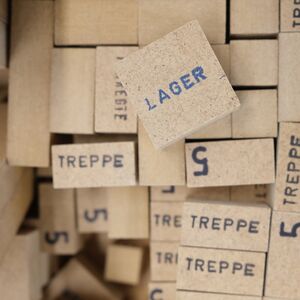Difference between revisions of "Theatre planning model kit"
| Line 4: | Line 4: | ||
You can use the blocks to explore the issues of designing a theatre - where should the paint shop be located relative to the metalwork shop, and the rear stage of the theatre? Where do the technical galleries go? How many toilets do you need? | You can use the blocks to explore the issues of designing a theatre - where should the paint shop be located relative to the metalwork shop, and the rear stage of the theatre? Where do the technical galleries go? How many toilets do you need? | ||
| − | For more information on using the kit, see the Canon teaching methodology | + | For more information on using the kit, see the Canon teaching methodology at the link below. |
The template is to help you make your own kit of blocks. We suggest using MDF or good quality plywood, around 15-20mm thick. The sizes of the blocks are in centimetres, and make an approximately 1:200 scale model of a large theatre or opera house. Scale down the blocks if you want to, but make sure to keep the proportions the same so everything fits together. | The template is to help you make your own kit of blocks. We suggest using MDF or good quality plywood, around 15-20mm thick. The sizes of the blocks are in centimetres, and make an approximately 1:200 scale model of a large theatre or opera house. Scale down the blocks if you want to, but make sure to keep the proportions the same so everything fits together. | ||
| Line 12: | Line 12: | ||
=== Credits === | === Credits === | ||
| + | |||
| + | The templates are based on a 1960 sheet, found in the Theaterbausammlung der TU Berlin, developed during the diploma in Theater- und Veranstaltungstechnik by Dipl.-Ing. Lotte Grenz. The templates were further developed by Prof. Dr.-Ing. Bri Newesely, with Dipl.Ing. Sarah Kamender and Dipl.-Ing. Sophia Soehner, of the Berliner Hochschule für Technik (BHT). The versions offered here were redrawn and translated into English by Nick Hunt of Rose Bruford College of Theatre and Performance, UK. | ||
Latest revision as of 11:25, 16 January 2023
The Theatre planning model kit is kit of wooden blocks, each of which represents a part of a theatre. There are blocks for the stage, auditorium, foyers, workshops, dressing rooms, and so on.
You can use the blocks to explore the issues of designing a theatre - where should the paint shop be located relative to the metalwork shop, and the rear stage of the theatre? Where do the technical galleries go? How many toilets do you need?
For more information on using the kit, see the Canon teaching methodology at the link below.
The template is to help you make your own kit of blocks. We suggest using MDF or good quality plywood, around 15-20mm thick. The sizes of the blocks are in centimetres, and make an approximately 1:200 scale model of a large theatre or opera house. Scale down the blocks if you want to, but make sure to keep the proportions the same so everything fits together.
- Download the template: .
- More information on how to use this tool can be found in the Canon Methodology: Design Your Own Theatre from a Kit
Credits
The templates are based on a 1960 sheet, found in the Theaterbausammlung der TU Berlin, developed during the diploma in Theater- und Veranstaltungstechnik by Dipl.-Ing. Lotte Grenz. The templates were further developed by Prof. Dr.-Ing. Bri Newesely, with Dipl.Ing. Sarah Kamender and Dipl.-Ing. Sophia Soehner, of the Berliner Hochschule für Technik (BHT). The versions offered here were redrawn and translated into English by Nick Hunt of Rose Bruford College of Theatre and Performance, UK.
